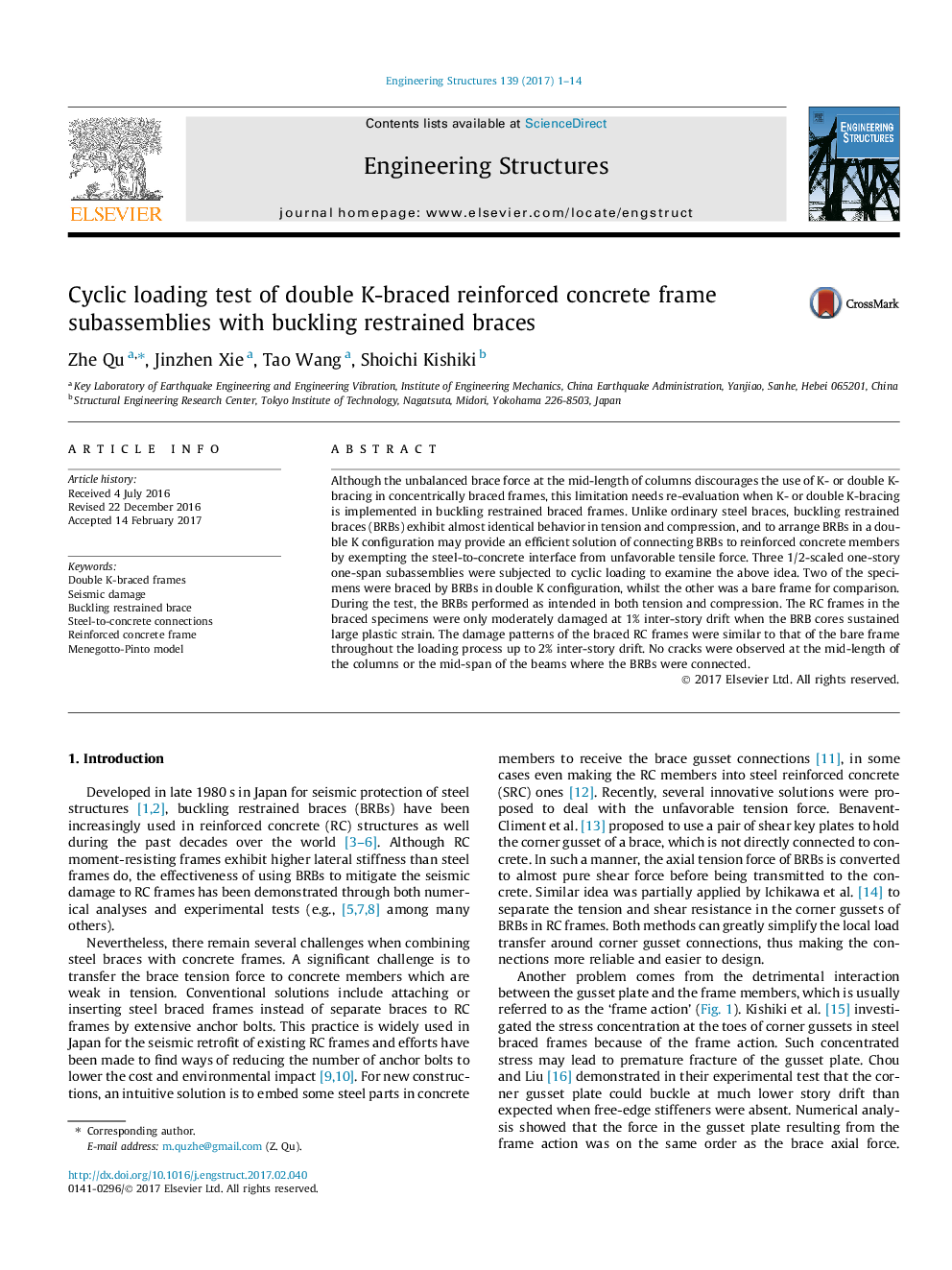| Article ID | Journal | Published Year | Pages | File Type |
|---|---|---|---|---|
| 4920348 | Engineering Structures | 2017 | 14 Pages |
Abstract
Although the unbalanced brace force at the mid-length of columns discourages the use of K- or double K-bracing in concentrically braced frames, this limitation needs re-evaluation when K- or double K-bracing is implemented in buckling restrained braced frames. Unlike ordinary steel braces, buckling restrained braces (BRBs) exhibit almost identical behavior in tension and compression, and to arrange BRBs in a double K configuration may provide an efficient solution of connecting BRBs to reinforced concrete members by exempting the steel-to-concrete interface from unfavorable tensile force. Three 1/2-scaled one-story one-span subassemblies were subjected to cyclic loading to examine the above idea. Two of the specimens were braced by BRBs in double K configuration, whilst the other was a bare frame for comparison. During the test, the BRBs performed as intended in both tension and compression. The RC frames in the braced specimens were only moderately damaged at 1% inter-story drift when the BRB cores sustained large plastic strain. The damage patterns of the braced RC frames were similar to that of the bare frame throughout the loading process up to 2% inter-story drift. No cracks were observed at the mid-length of the columns or the mid-span of the beams where the BRBs were connected.
Related Topics
Physical Sciences and Engineering
Earth and Planetary Sciences
Geotechnical Engineering and Engineering Geology
Authors
Zhe Qu, Jinzhen Xie, Tao Wang, Shoichi Kishiki,
